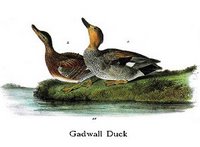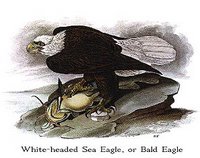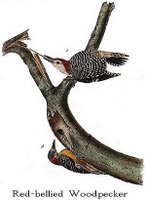
26 horned lark
27 mallard
28 northern shoveler
29 mute swan
30 American coot
31 gadwall
32 northern pintail
33 northern harrier
34 American kestrel
JAN. 15, EAGLE BLUFFS,
sunny, 50—Off to Eagle Bluffs Conservation Area, an artificial wetland created for migratory waterfowl. Though you mainly drive gravel roads among gated pools and flooded fields, the scenery is tremendous. The area lies in a mile-wide floodplain bordered on the east by 200-foot bluffs and on the west by the Missouri River.
A horned lark in a dry, bare field welcomes me to the area. Then I hit the pools, where mallards are the rule but a few shovelers weave through. I locate gadwalls also, my birding pleasure increasing with every species new to my list even if they're easy additions. In fact, for an ambitious list I don't have a single decent bird so far this year. But the competitive aspect is a bonus; ordinary outings are still fun.
I have a spotting scope because this is car-birding. You can't remotely begin to approach ducks on foot
—they're far too wary. So I stay in the car, put my eye against the 22x eyepiece, and search for anything that isn't a mallard. Among 700 mallards in a flooded cornfield are 20 or so shovelers and elegant pintails, with a few coot clusters. Most of the ducks are buttoned down, bill sheathed in feathers, against the wind.
My scope sweeps past a bird of prey sitting atop a small mound on a flat island. It's far enough away that I have trouble with the ID, but find enough good clues: even streaking on breast, owl-like face, habitat and behavior
—a northern harrier. (I don't do well with raptors, sparrows, and swallows
—or sandpipers and gulls. Besides these and a few other problem areas, I'm quite good at woodpeckers.)
I also walk in the woods along the Missouri River, across from the tiny town of Lupus. I can see the house of a work colleague and friend. His house, like many in town, was raised on pilings after the 1993 flood. Driving out of the area at the end of my birding day, I brake hard to watch a kestrel tear apart a rodent on a gatepost.
 41 bald eagle
41 bald eagle


 22 eastern bluebird
22 eastern bluebird
